Castel del Monte - a medieval fortress of secrets, symbols and questions that are still unanswered
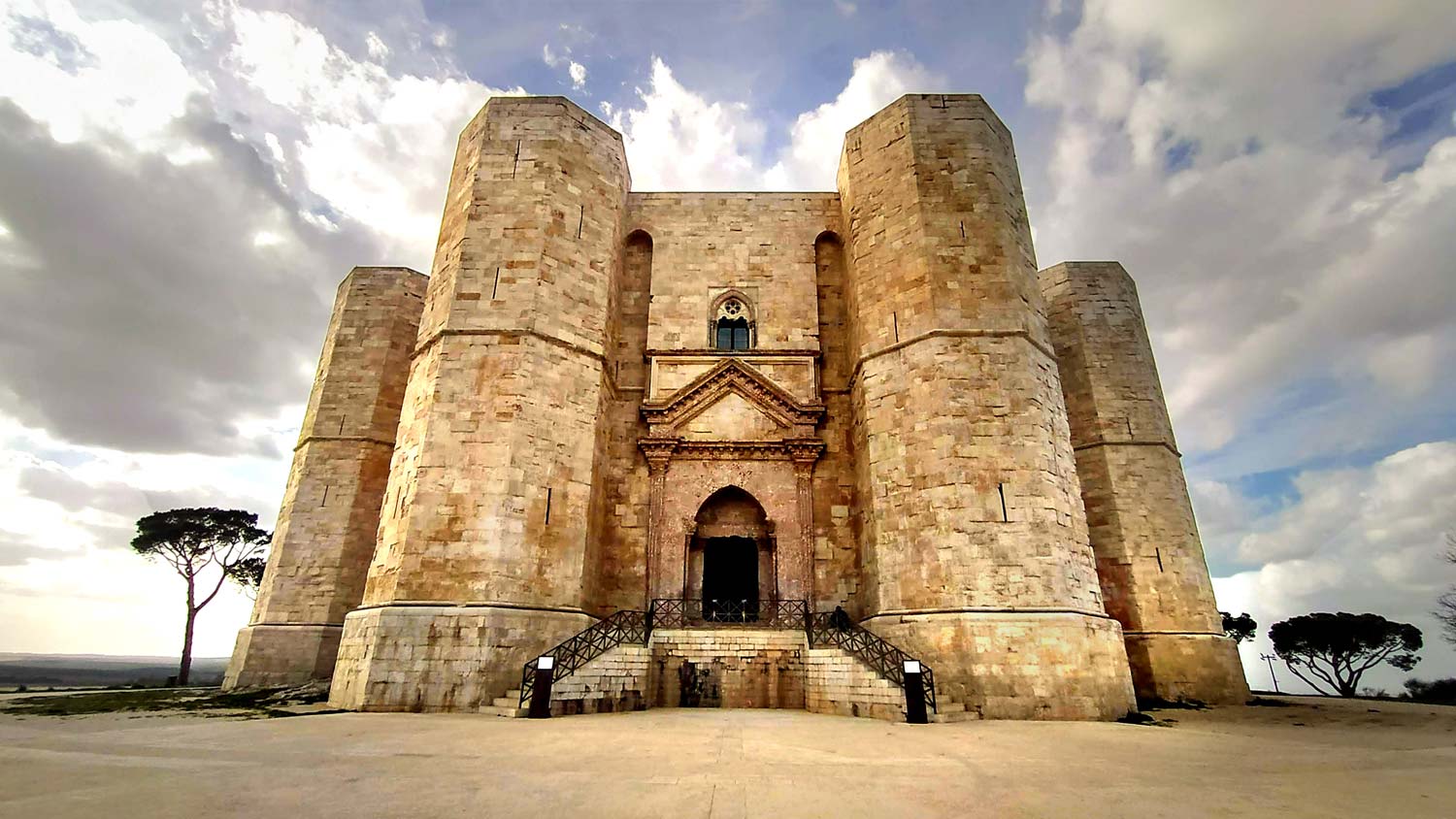
Photo taken by phone Xiaomi A3
Castel del Monte can be seen from afar. From far away ...
Behind the windows of the car there is a typical rural landscape of southern Italy: grapes, olives, oranges, lemons. Typical landscape, but in an unusual terrain for Italy. It's flat as far as the eye can see. Everywhere flat ... one would like to say: boredom.
My eyes travel lazily along the line of the flat horizon in search of something more interesting (I have already got used to the sight of grapes, lemons and the rest, treating them almost like my natural environment). So I slowly take in the area with a slightly sleepy look. I perceive the slight curve of the horizon in the form of a single, gentle hill as an attraction against the background of unbearably flat ground. Yes, here one might conclude that the Earth is really flat ...
The only hill in this area gently rises from the monotonous, vast plain. It is forested. ABOUT! Something new! Wooded ... Eyesight goes on, but the brain is a bit numb (mainly by a long flat ride straight ahead). Suddenly there is a signal. A short but sharp impulse that shakes me out of my numbness: What's standing there? Unit? Skyscraper… nooo, too low. Someone built a warehouse on the top of the hill ?!
I finally came to my senses. It hit me. This Castel del Monte!
This absolutely unique castle, a unique specimen on UNESCO listI've been dreaming about for years to see him live. I didn't recognize him. He surprised me with his appearance from afar.
It started weird, but ..
Everything here is strange or unique
From the moment I made eye contact with Castel del Monte, for the next 20 km, the castle kept my eyesight. Various thoughts raced through my head. Various fragments of information obtained in the past (when I saw his picture for the first time somewhere a few years ago). They appeared and reminded me of what we were going to deal with. A weave of extraordinary, unusual, special and strange things ... even the look of him from afar, which interrupted my lethargy behind the wheel. It was strange, but paradoxically, it suited this mixture of oddities so well.
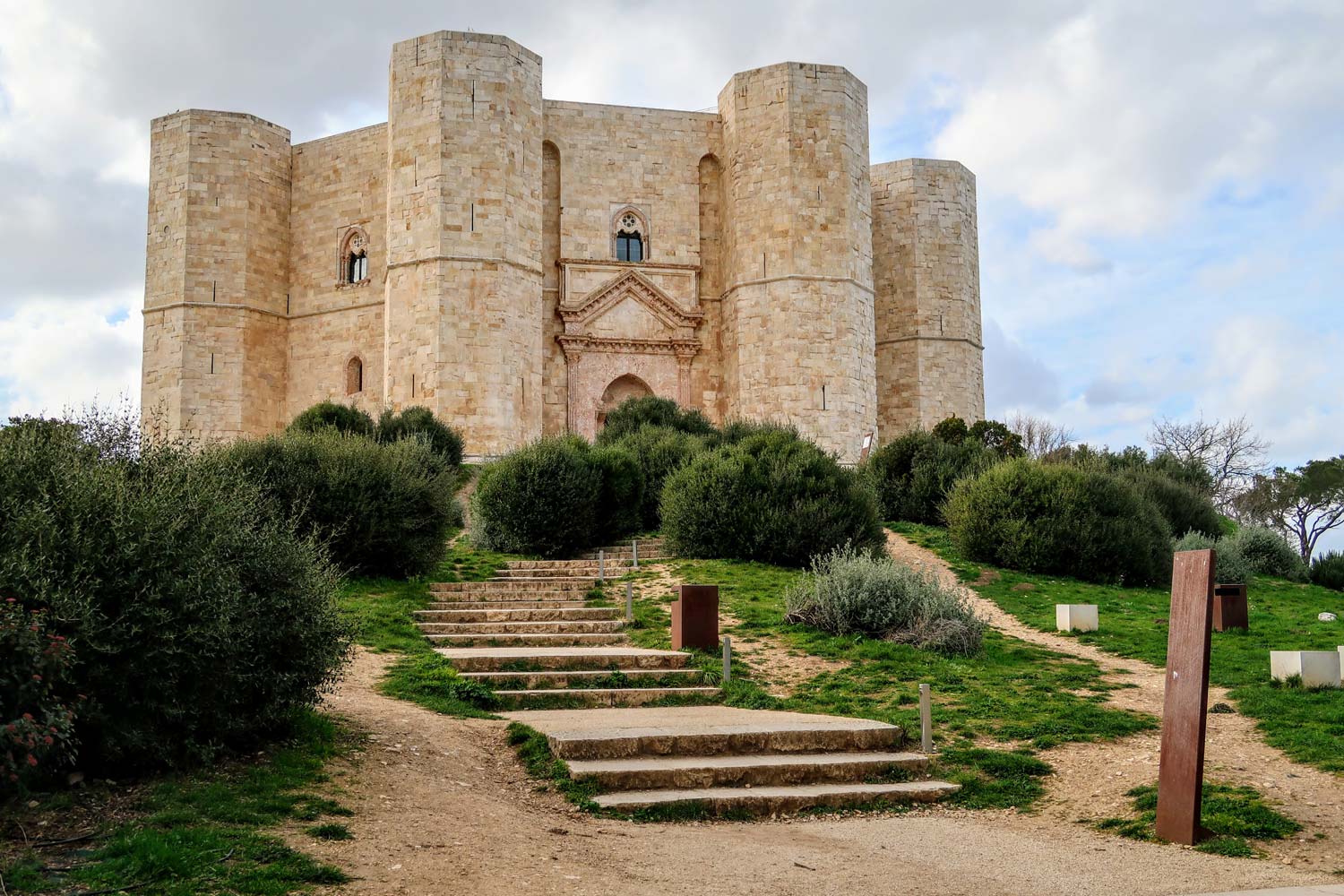
Photo taken with the camera Canon G7X Mark II
A castle with no destination
The very fact that until today it has not been possible to explain why Castel del Monte was built is interesting. Yes! Until today it is not known what is the purpose of this castle! There are plenty of theories. Its potential destiny has been analyzed by several generations of historians, and there is always something wrong.
The simplest explanation (that it is a military facility) is not defended, if only because there are no defensive walls, no moat or other fortifications around the castle.
Nobody in their right mind in the 1250th century (when the castle was built - in XNUMX) would have built a fortress without fortifications! Certainly, the emperor would not have had such an idea Frederick II Hohenstauf, widely recognized as one of the most enlightened and educated minds of the era.
A powerful and unique emperor
To feel the atmosphere of Castel del Monte better, it is worth getting to know Frederick II Hohenstauf himself a little better. His life is an exceptionally colorful story, right from his birth. Constance of Sicily gave birth to him at the age of 40. Of course, in the 40th century, nobody would have believed that a XNUMX-year-old woman could happily give birth to a child. The birth of Fryderyk was therefore public. In the market square in the small town of Jesi, near Ancona, a special tent was set up so that the audience could freely observe the birth. In this way, they could see with their own eyes that the Emperor and Empress had blood from the blood of a son and a rightful descendant.
Science was what was most important to Frederick II Hohenstaufen. He spoke several languages, he was especially devoted to astronomy and astrology, he was in active contact with scientists from various fields. For about 30 years he created a treatise on education, having a huge impact on the development of medieval science. His is especially well known deprivation experimentfrom which he thought he would learn what the natural, primal language used by man was.
The experiment consisted in raising a group of children from infancy in complete isolation from human speech. The caregivers of the children could not use voice or speech in their presence. According to the assumptions of the emperor, children start communicating spontaneously in a language that would be natural and primal for them. Fryderyk assumed that it would be the language of the children's parents or one of those common then: Hebrew, Greek, Latin, Arabic ...
The children did not survive the experiment, but we do not know the cause of their death.
Curiosity:
Today it is known that the correct use of the speech apparatus is formed in a person in early childhood. Depriving a person of stimuli stimulating speech development will prevent him from using it properly. Currently, the age limit of 12 is considered critical (some sources say even 7). If the speech apparatus is not properly formed during this time, a person will never speak properly again.
Symbolism of Castel del Monte
What you notice when you see the lock for the first time is its shape and regularity. Castel del Monte was built on the plan of a regular octagon (octagon). On all eight corners of the main body of the castle there are towers, the shape of which is also based on the octagon. Each of the two floors has eight symmetrical rooms. The inner courtyard is also octagonal, regular in shape. So it is clearly visible that the number 8 and the shape of an octagon are the guiding elements of this building.
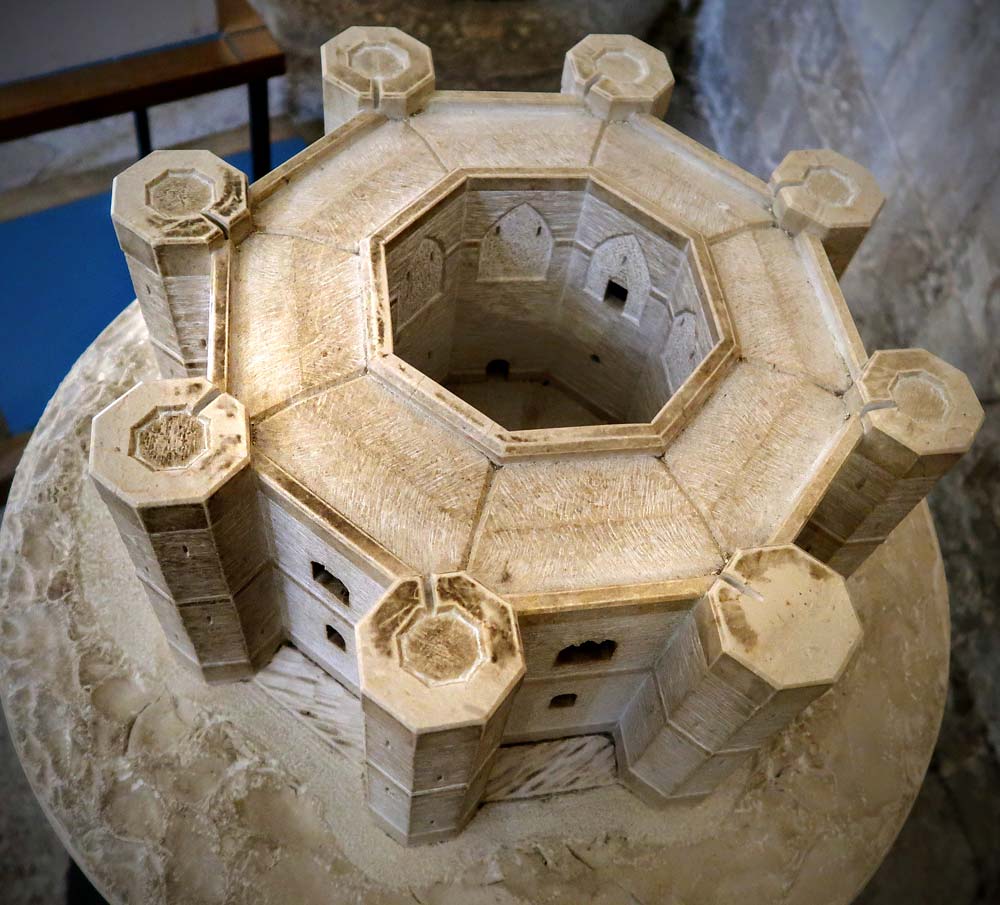
Photo taken with the camera Canon G7X Mark II
In religious symbolism, the number 8 symbolizes the connection between God and Man. At the same time, 8 can also be considered a symbol of infinity.
In turn, the octagon in symbolism is interpreted as an intermediate shape between a square and a circle. It integrates them into one intermediate shape. The shape of the castle connects the square (symbol of the earth) and the circle (symbol of heaven) into one, mediating between heaven and earth.
Taking into account the fact that the castle was built in the thirteenth century, during the period of the greatest piety, it is difficult to consider such clear symbolism as accidental.
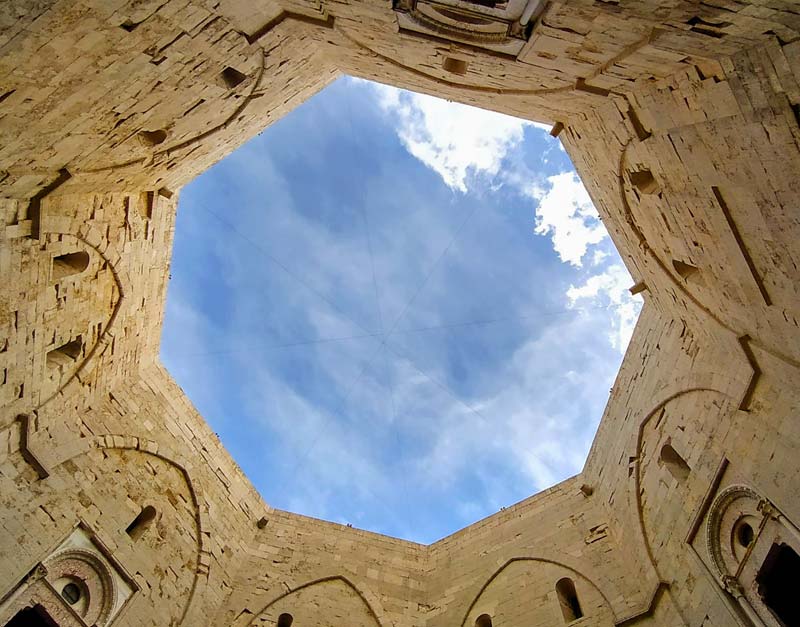
Photo taken by phone Xiaomi A3
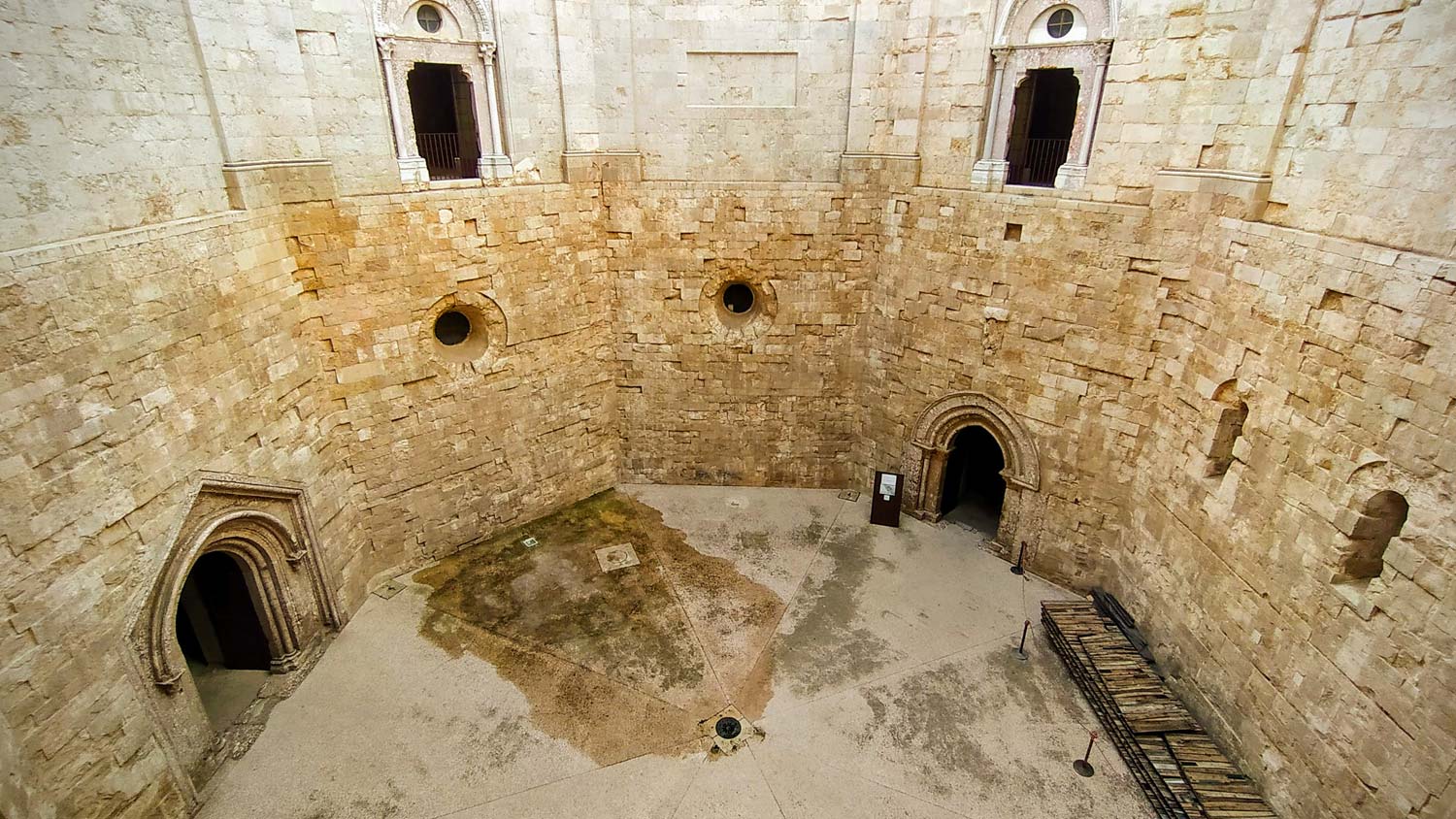
Photo taken by phone Xiaomi A3
Of course, over time, construction relationships in which the number 8 can be found were found more and their passions were searched for. While standing inside the castle, it is hard to resist the temptation to look for another eight, undiscovered by anyone. By a happy coincidence, the eight can be found even on the date of death of Frederick II, who died in 1250 year 🙂 1 2 + + + 5 0 8 =
Access control in the XNUMXth century?
You might be surprised, but the building inside has been designed to ensure access control for the right people.
The castle has two entrances: the main one at the front of the building and a discreet one at the back of the building. Only important guests of the castle could use the main entrance, while the back entrance was used by servants. The rooms in the castle are divided into private (only at the guest's disposal) and common (e.g. for meals, banquets, balls). The layout of the doors and corridors inside the castle takes into account the division of rooms and was designed in such a way that the service paths do not intersect with those used by the guests. Also, the servants 'access to common rooms is collision-free, and none of the servants' routes passes through the courtyard.
For the curious, I present below a copy of the drawings that I found on the website of the Italian Castle Institute (Istituto Italiano dei Castelli). They illustrate the way the access system works. The dashed lines are the routes of the visitors, and the dotted lines are the routes of the service.
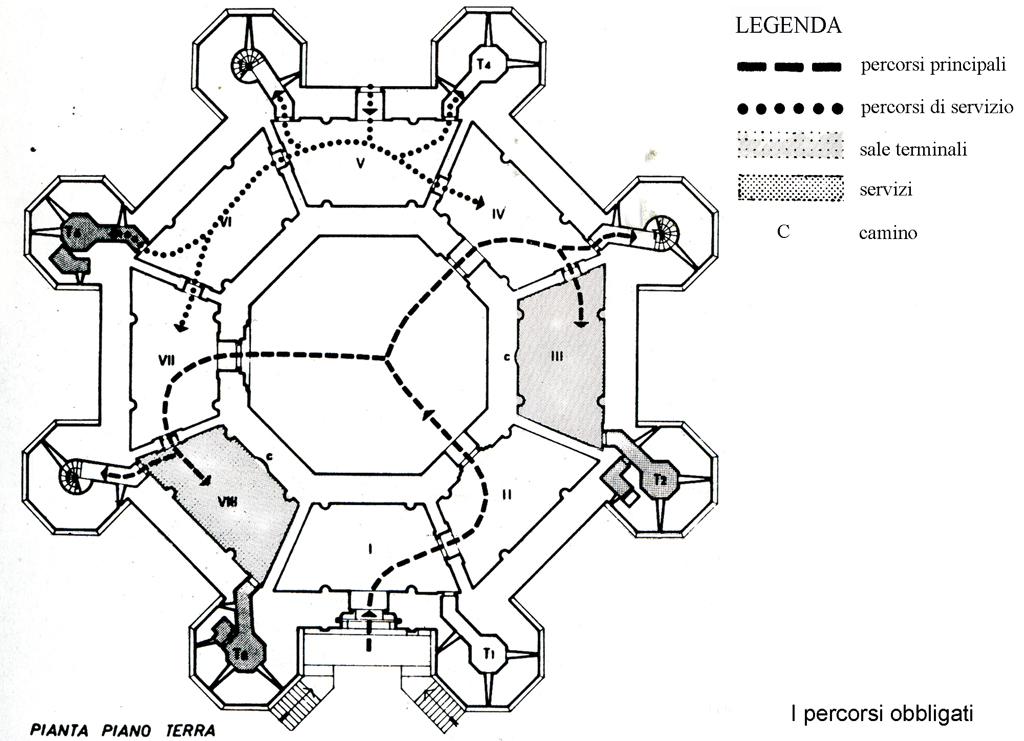
The image comes from the website of the Italian Castle Institute: www.istitutoitalianocastelli.it
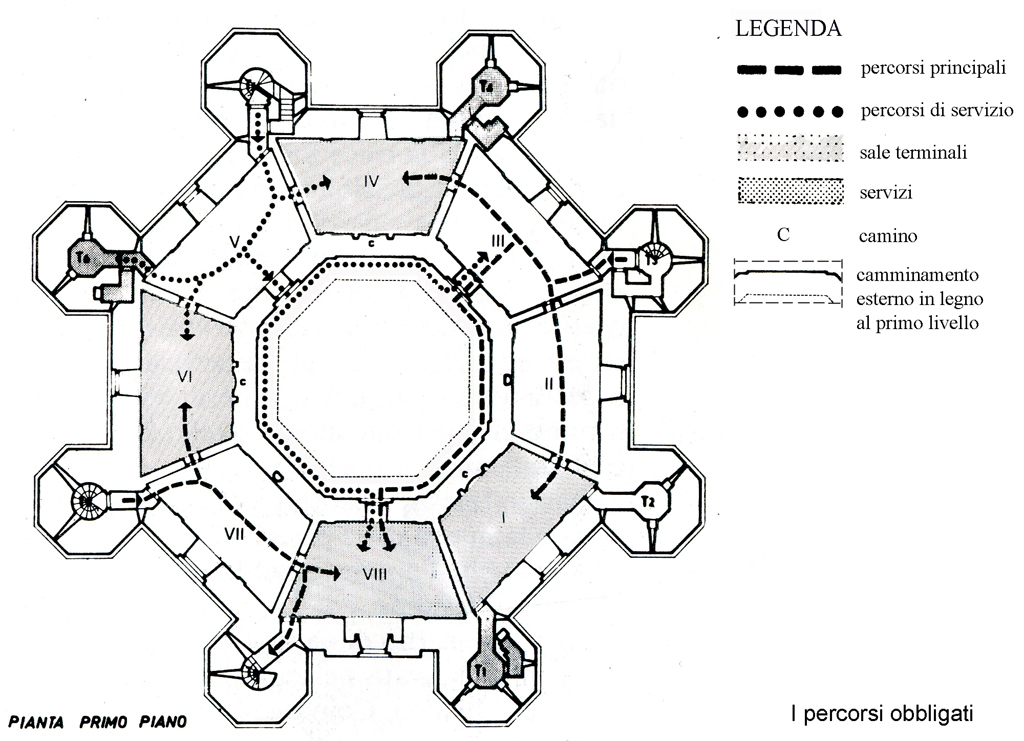
The image comes from the website of the Italian Castle Institute: www.istitutoitalianocastelli.it
But it was for something
In practice, the castle was used by the emperor's court mainly as a hunting lodge during hunting. Sixteen years after the death of the emperor, the castle was turned into a prison in which for 30 years (!!!) the emperor's three grandsons were imprisoned: Enrico, Federico and Azzolino (these were the sons of Manfred, the illegitimate son of Frederick II).
During the plague in 1665, the castle served as a shelter for wealthy families from nearby Andria, effectively protecting them from disease. Then it was abandoned and fell into disrepair for 200 years.
In 1876, the state took over the care of the castle.
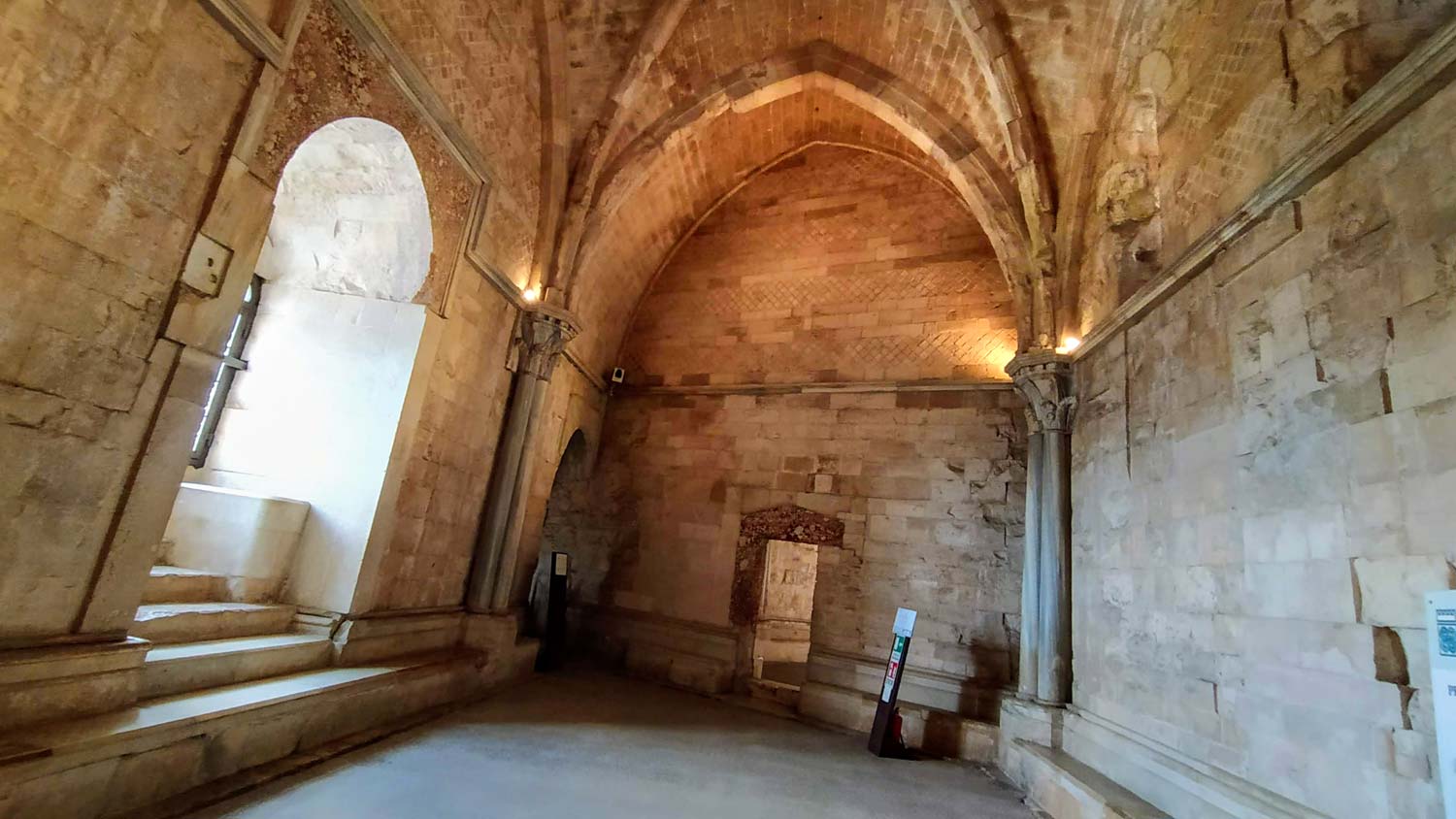
Photo taken by phone Xiaomi A3
Symbol of harmony and perfection
It is hard to resist the impression that Frederick II (a lover of science and an enlightened mind, and at the same time an outstanding ruler of a large empire) wanted to create something symbolic. Something that brings together the things that shaped his life. Something that would contain what is important to him. This building says so much about itself. His blood flowed in his veins, in which one can find close Norman, Germanic and Burgundian ancestors. This mixture of blood is clearly visible in the architectural details of windows, doors, vaults, etc.
A testimony of piety, the connection between Man and God, Earth and Heaven, a fascination with science…. the whole building screams symbols.
I have an overwhelming feeling that Castel del Monte is not a castle but a monument. A memento he created after himself. This is how I feel and understand it.
The only question is why Frederick II never visited Castel del Monte and never saw it with his own eyeseven though the castle was completed 10 years before his death?
Is such a perfect building still not meeting his expectations?
We will never know that. The medieval fortress of secrets, symbols and questions will keep the answers to himself, forever.
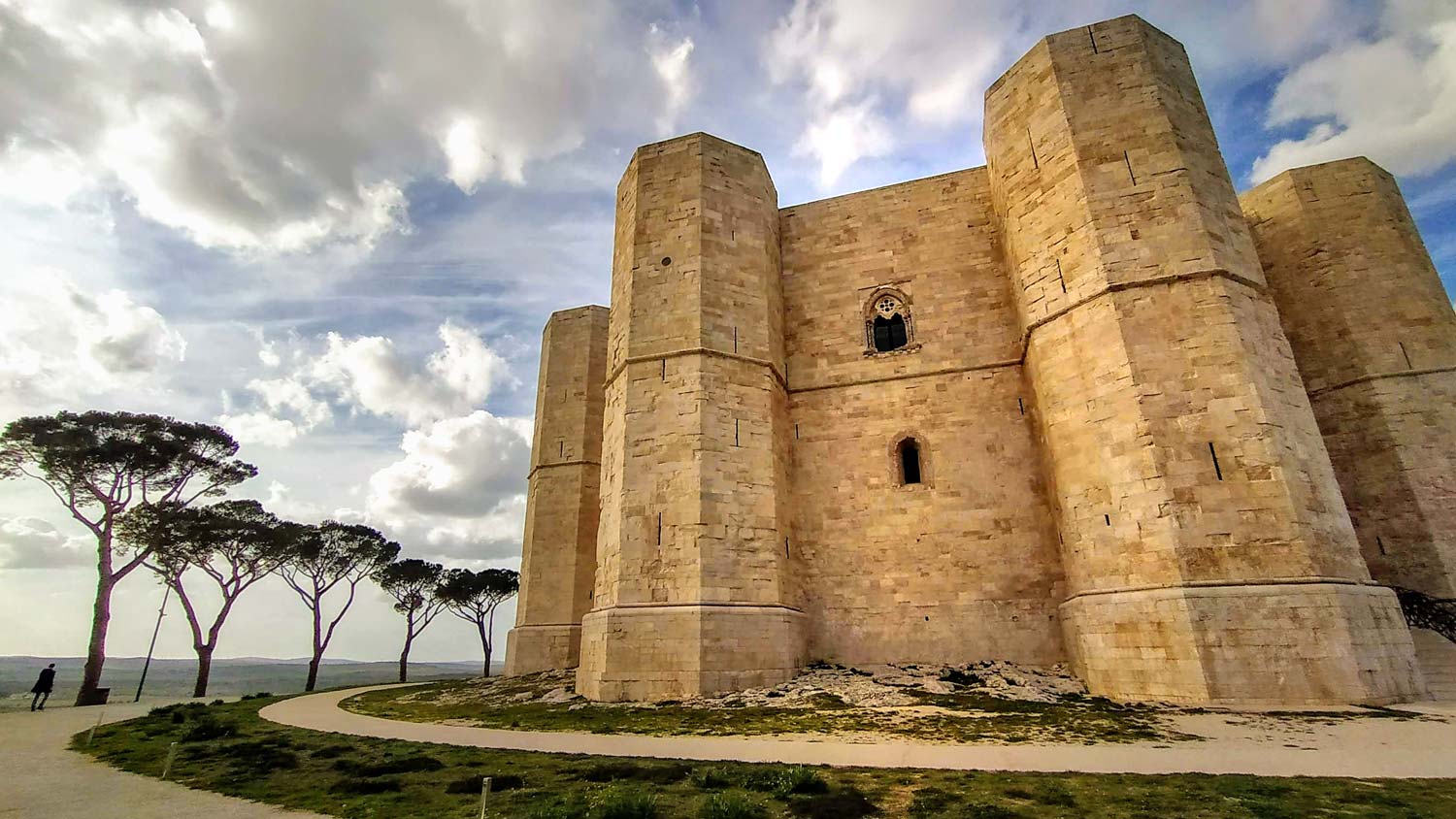
Photo taken by phone Xiaomi A3
Visiting Castel del Monte
It is impossible to drive up to the castle itself. The access road is closed to tourist traffic. It is also not allowed to park on the side of the access road. Don't try this because the mandate is guaranteed. There is a huge tourist car park near the castle and you should stop there.
From the parking lot to the castle you have to walk about 1000 m along a pavement or asphalt road.
There is a small car park under the castle, but it is intended mainly for guests of the restaurant operating right next to the castle.
Admission to the castle is paid. A normal ticket costs EUR 7, and a reduced ticket EUR 2.
European Union citizens up to 17 years old have free admission, and between 18 and 25 years old they can buy a reduced ticket.
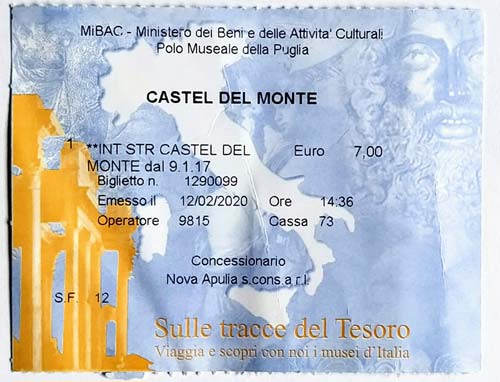
Useful GPS coordinates
Tourist parking near the castle, GPS:
41°04’36.3″N 16°16’29.1″E
41.076747, 16.274736 - click and route
Important to me!
Give the article a good rating (5 stars welcome 😀)!It's free, a for me it is very important! The blog lives on visits and thus has a chance to develop. Please do it and ... thank you in advance!
If you like my guides, you will certainly find the one I created useful guide catalog - [click]. There you will find ready-made ideas for your next trips, descriptions of other tourist destinations and an alphabetical list of guides divided into countries, cities, islands and geographical regions.
I also post link to Facebook profile - [click]. Come in and press "Follow"then you will not miss new, inspiring posts.
Unless you prefer Instagram. I'm not a social media demon, but you can always count on something nice to look at on my instagram profile - [click]. The profile will gladly accept any follower who likes it.
I make the content I create available free of charge with copyright, and the blog survives from advertising and affiliate cooperation. So, automatic ads will be displayed in the content of the articles, and some links are affiliate links. This has no effect on the final price of the service or product, but I may earn a commission for displaying ads or following certain links. I only recommend services and products that I find good and helpful. Since the beginning of the blog's existence, I have not published any sponsored article.
Some of the readers who found the information here very helpful, sometimes ask me how you can support the blog? I do not run fundraisers or support programs (type: patronite, zrzutka or "buy coffee"). The best way is to use links. It costs you nothing, and support for the blog is self-generating.
Pozdrawiam

Frederick II (the one on the greatness of Prussia) was of the Hohenzollerns, not of the Hohenstaufen.
good point
one sentence too many
corrected and thank you!
I have a historical question - what did Frederick II, the great of the Hohenzollerns, have to do with the south of Italy and Castel del Monte at that time? This was not the time to plant potatoes or build palaces with shell chambers in Potsdam. The author was right and do not confuse him - Frederick II Hohenstauf - the Roman emperor from 1220 was responsible for the construction of about 200 fortresses, castles and palaces in Italy. And his descendants were imprisoned in this castle after the Angevins took over.